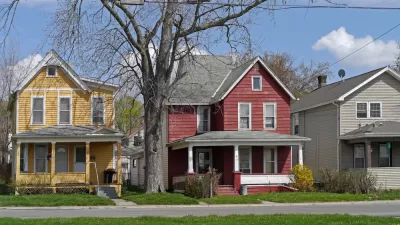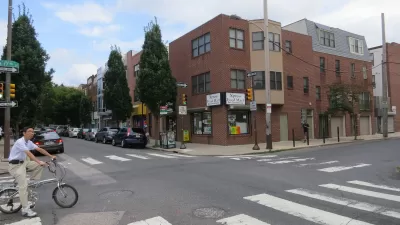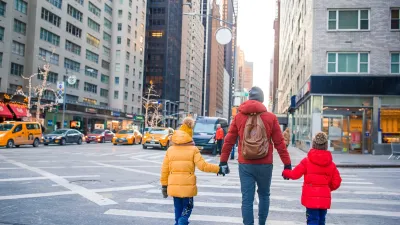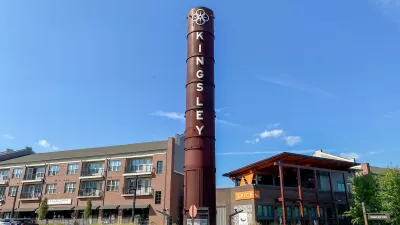Places like Columbia Heights, an older suburb north of Minneapolis, lie at the focal point of conflict over development and gentrification. Can these places support a 21st-century urbanism?

Adjoining a rapidly-gentrifying arts district, Columbia Heights is known for its deep working-class roots and a heavy helping of automotive businesses. Alan Ehrenhalt discusses the tensions that are rising as demographic shifts have city leaders looking toward a hipper, more prosperous future.
Inner-ring suburbs like Columbia Heights "are blue-collar towns, developed after World War II to attract industrial workers lifting themselves into the middle class [...] these first-tier suburbs now are home to aging populations, aging housing stock and aging infrastructure [...] Lurking beneath the debate, as you might expect, is the issue of gentrification."
While some inner suburbs are cashing in on their inherent walkability (i.e., streetcar suburbs), others don't lend themselves so easily to the coffee shop set. "Sprinkled with drive-up businesses and constant curb cuts, Central Avenue [in Columbia Heights] is virtually unwalkable. Pedestrians who wish to stroll down the busiest mile-long strip have to cross the wide street over and over again to find sidewalk space."
FULL STORY: The Saga of an Inner Suburb's Struggle for an Identity

Planetizen Federal Action Tracker
A weekly monitor of how Trump’s orders and actions are impacting planners and planning in America.

Congressman Proposes Bill to Rename DC Metro “Trump Train”
The Make Autorail Great Again Act would withhold federal funding to the system until the Washington Metropolitan Area Transit Authority (WMATA), rebrands as the Washington Metropolitan Authority for Greater Access (WMAGA).

DARTSpace Platform Streamlines Dallas TOD Application Process
The Dallas transit agency hopes a shorter permitting timeline will boost transit-oriented development around rail stations.

New Jersey Duplexes Elicit Mixed Reactions
Modern, two-unit residences are proliferating in northern New Jersey communities, signaling for some a boon to the housing supply and to others a loss of historic architecture.

Renters Now Outnumber Homeowners in Over 200 US Suburbs
High housing costs in city centers and the new-found flexibility offered by remote work are pushing more renters to suburban areas.

The Tiny, Adorable $7,000 Car Turning Japan Onto EVs
The single seat Mibot charges from a regular plug as quickly as an iPad, and is about half the price of an average EV.
Urban Design for Planners 1: Software Tools
This six-course series explores essential urban design concepts using open source software and equips planners with the tools they need to participate fully in the urban design process.
Planning for Universal Design
Learn the tools for implementing Universal Design in planning regulations.
Municipality of Princeton
Roanoke Valley-Alleghany Regional Commission
City of Mt Shasta
City of Camden Redevelopment Agency
City of Astoria
Transportation Research & Education Center (TREC) at Portland State University
US High Speed Rail Association
City of Camden Redevelopment Agency
Municipality of Princeton (NJ)





























